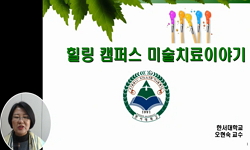밀교미술에 관한 기존의 연구는 특정 작품을 고찰하고 논의하는데 그 초점이 맞추어졌다. 그러다보니 밀교미술의 시대별 전개와 특징, 한국 밀교미술의 흐름을 파악하기는 쉽지 않았다. 따...
http://chineseinput.net/에서 pinyin(병음)방식으로 중국어를 변환할 수 있습니다.
변환된 중국어를 복사하여 사용하시면 됩니다.
- 中文 을 입력하시려면 zhongwen을 입력하시고 space를누르시면됩니다.
- 北京 을 입력하시려면 beijing을 입력하시고 space를 누르시면 됩니다.
https://www.riss.kr/link?id=A108458512
- 저자
- 발행기관
- 학술지명
- 권호사항
-
발행연도
2022
-
작성언어
-
-
주제어
밀교 ; 밀교미술 ; 만다라 ; 사리신앙 ; 사리장엄구 ; 밀교존상 ; Esoteric Buddhism ; Esoteric art ; Mandala ; Sarira belief ; Sarira ornaments ; Esoteric statues
-
KDC
null
-
자료형태
학술저널
-
수록면
59-109(51쪽)
- 제공처
-
0
상세조회 -
0
다운로드
부가정보
국문 초록 (Abstract)
밀교미술에 관한 기존의 연구는 특정 작품을 고찰하고 논의하는데 그 초점이 맞추어졌다. 그러다보니 밀교미술의 시대별 전개와 특징, 한국 밀교미술의 흐름을 파악하기는 쉽지 않았다. 따라서 본 연구에서는 이러한 측면에 초점을 맞추어 논지를 전개하고자 했다.
이를 위해 우선 밀교의 성립 배경과 밀교미술의 개념 및 특징에 대해 고찰했다. 한편 불교계의 동향이 밀교미술에 어떤 영향을 미치는 가를 고려하면서 한국의 밀교 수용과 밀교미술의 전개를 시대별로 나누어 살펴보았다. 삼국시대와 남북국시대는 신라를 중심으로 신인비법(神人秘法)과 호국 관련 밀교미술, 신라적 만다라의 성립과 기존 존상의 밀교화, 사리탑 신앙과 탑에 봉안된 『다라니경』을 중심으로 밀교미술의 전개를 고찰했다.
고려시대의 밀교는 왕실의 밀교신앙, 총지종과 신인종의 성립, 밀교 의식 및 행사 등과 같은 불교계의 움직임을 통해 그 실상을 파악할 수 있었다. 한편 밀교미술의 전개는 고려불화, 라마교 양식의 불상, 『보협인다라니경(寶篋印陀羅尼經)』과 보협인탑(寶篋印塔), 밀교 의식구 등을 통해 살필 수 있었다.
조선시대는 국가의 숭유억불 정책에도 불구하고 조선 초에 왕실과 민간에서 밀교 관련 불사가 행해지고, 밀교 계통의 전적이 간행되면서 사리신앙과 사리장엄구의 조성이 이루어짐으로써 밀교미술의 전개가 이루어졌다. 또한 19세기 이후에 조선불화에 새롭게 등장하는 밀교 존상과 그 출현 배경을 살펴보았다.
한국 밀교미술의 어제와 오늘을 고찰하고 그 정체성과 특징을 파악하는 것은 사실상 쉬운 일이 아니다. 하지만 이번에 진행된 다소의 연구 성과가 한국 밀교미술의 성격과 흐름을 이해하는데 있어 중요한 단초가 되었으면 한다.
다국어 초록 (Multilingual Abstract)
Existing studies and papers on esoteric art focused on consideration and discussion centering on specific works. As a result, it was not easy to grasp the development and characteristics of esoteric art by period and the flow and characteristics of es...
Existing studies and papers on esoteric art focused on consideration and discussion centering on specific works. As a result, it was not easy to grasp the development and characteristics of esoteric art by period and the flow and characteristics of esoteric art in Korea. Therefore, this study focused on these aspects and developed the thesis.
To this end, first of all, the background of the establishment of esotericism and the difference between esotericism and exoterism were examined, and the concept of esoteric art and the characteristics of esoteric art were examined. On the other hand, while examining the acceptance of Esoteric Buddhism and the development of Esoteric art in Korea by age, I identified trends in the Buddhist world by period and focused on how they affected Esoteric art.
Unified Silla centered on the Shinin technique(神人秘法) and esoteric arts related to national defense, the establishment of Silla-style mandalas(蔓茶羅) and the esotericism of existing statues(尊像), and the belief in stupas and the Darani Sutras(陀羅尼經) enshrined in the pagodas. It dealt with the development of esoteric art.
In the Goryeo Dynasty, the royal family's esoteric beliefs and protective measures, the establishment of Chongjijong(摠持宗) and Shininjong(神印宗), and esoteric rituals and events were studied. In addition, based on this, I broadened my understanding of Goryeo Buddhist paintings, Lamaism Buddha statues, Bohyeopin Darani Sutra(寶篋印陀羅) and Bohyeopin Tower(寶篋印塔), and esoteric rituals that reflect esoteric beliefs and esoteric statues.
In the Joseon Dynasty, even under the national policy of promoting Confucianism and suppressing Buddhism, in the early Joseon Dynasty, Buddhist affairs(佛事) related to Esoteric Buddhism were carried out in the royal family and the private sector, and books such as The Collection of Truths(眞言集) and Secret Buddhism(秘密敎) were published. In addition, this study focused on the belief in sarira and the creation of a stele for relics, and also examined the relevance with esotericism by examining the contents of miracles(異蹟) and worldly oriented contents in the sarira stupa created in the late Joseon Dynasty. I tried to figure out the background of the esoteric Buddha newly appearing in Buddhist paintings and to understand the difference from Goryeo Buddhist paintings.
It is not easy to consider the past and present of Korean esoteric art, but I tried to use the results of this research as a starting point for understanding the flow of Korean esoteric art.
동일학술지(권/호) 다른 논문
-
즉신성불(卽身成佛)의 의미와 원리에 대한 고찰 - 『대일경』과 『대일경소』를 중심으로 -
- 한국밀교학회
- 이중석 ( Lee Jung-seok )
- 2022
-
- 한국밀교학회
- 한진희 ( Han Jin-heui )
- 2022
-
- 한국밀교학회
- 권상우 ( Kwon Sang-woo )
- 2022
-
묵당(黙堂) 강유문(姜裕文)의 불청운동(佛靑運動)과 현실인식
- 한국밀교학회
- 김경집 ( Kim Kyung-jib )
- 2022




 KISS
KISS


